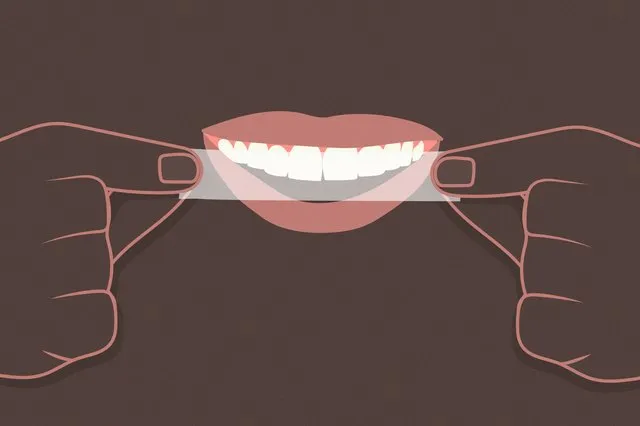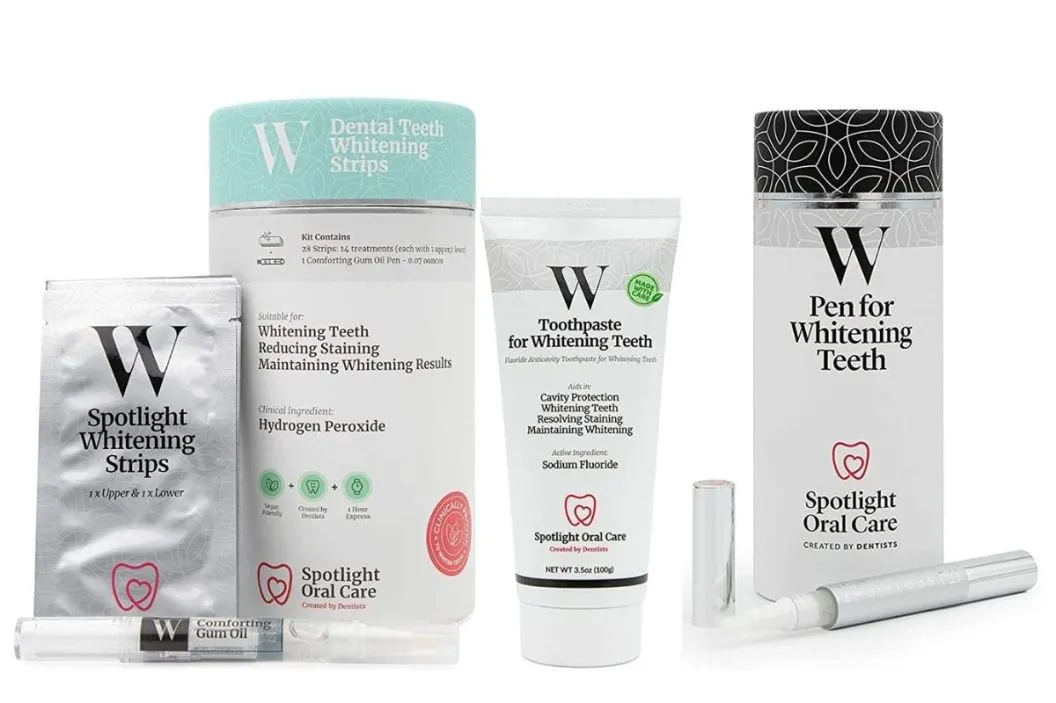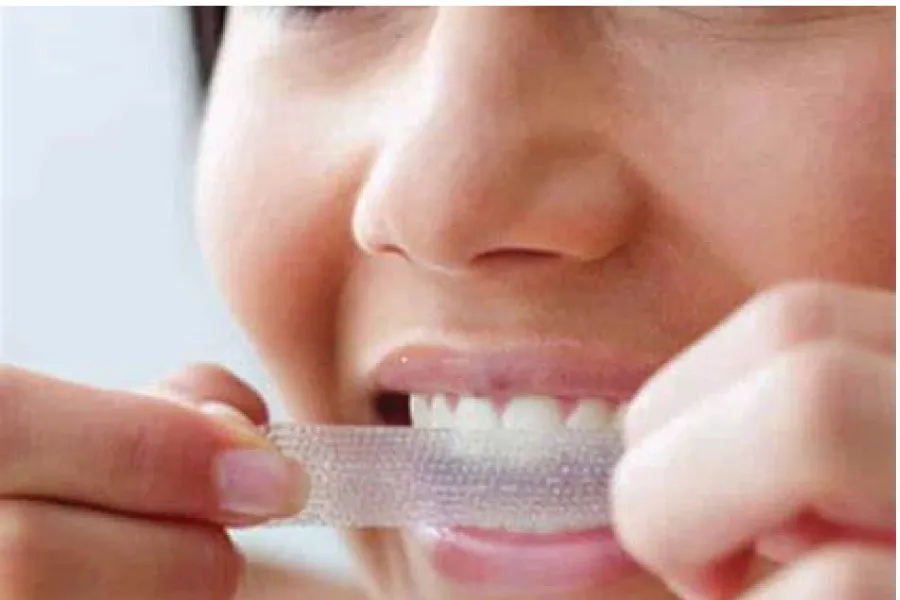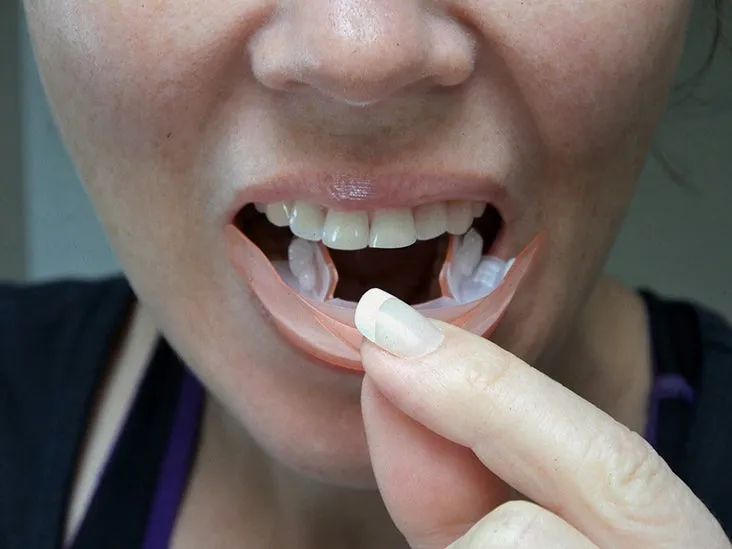What are Whitening Strips
Whitening strips have revolutionized at-home teeth whitening, offering a convenient and relatively inexpensive way to brighten your smile. These thin, flexible strips are coated with a peroxide-based whitening agent, typically hydrogen peroxide or carbamide peroxide. Designed to adhere directly to your teeth, they provide a targeted approach to remove stains and discoloration. The popularity of whitening strips stems from their ease of use and the noticeable results they can deliver. Unlike professional whitening treatments, which are performed by a dentist, whitening strips offer a more accessible option for those seeking a brighter, more confident smile. They are readily available over the counter, making them a practical choice for individuals looking to enhance their teeth’s appearance without the need for a dental appointment. The efficacy, however, can vary depending on the brand, concentration of the whitening agent, and the user’s adherence to the instructions.
How Whitening Strips Work
The mechanism behind whitening strips involves a chemical reaction that breaks down stain molecules on the surface of your teeth. The active ingredient, usually hydrogen peroxide, penetrates the enamel, the outer layer of the tooth. Once inside, it oxidizes the stain molecules, causing them to break apart. This process lightens the color of your teeth, resulting in a brighter appearance. The effectiveness of the whitening strips also depends on the concentration of the peroxide and the length of time the strips are applied to the teeth. Most strips are designed to be used once or twice daily for a specific duration, usually ranging from 30 minutes to an hour. Consistency in following the instructions is crucial for achieving the desired results. The effectiveness of whitening strips is most pronounced on extrinsic stains, those caused by factors such as coffee, tea, red wine, and smoking. Intrinsic stains, which are deeper within the tooth structure, may require more aggressive treatments or professional intervention.
The Ingredients in Whitening Strips

The primary active ingredient in most whitening strips is either hydrogen peroxide or carbamide peroxide. Hydrogen peroxide is a strong oxidizing agent that directly breaks down stain molecules. Carbamide peroxide is a slower-releasing form of peroxide that breaks down into hydrogen peroxide. In addition to the active ingredients, whitening strips also contain a variety of other components. These include the base material of the strip, which provides flexibility and adhesion to the teeth, as well as a gelling agent to help the whitening agent stay in contact with the teeth. The base material is typically made of a flexible plastic or polymer. The gelling agents help to stabilize the peroxide and ensure that it adheres properly to the teeth’s surface. Flavorings and sweeteners may be added to improve the taste, making the application more pleasant. Some strips may also contain desensitizing agents, such as potassium nitrate or fluoride, to help mitigate any potential sensitivity. It’s important to review the ingredient list, especially if you have known allergies or sensitivities.
Step-by-Step Guide to Using Whitening Strips
Using whitening strips effectively requires following a few simple steps. While the process is straightforward, it is important to adhere to all of the instructions that are provided with the whitening strips to make sure the process is successful and to avoid any potential side effects. This ensures optimal results and minimizes potential discomfort. Proper preparation, application, timing, and aftercare are all essential aspects to be considered. Make sure to carefully follow the manufacturer’s instructions, as procedures may vary slightly between brands.
Preparation before Application
Before applying whitening strips, it is beneficial to brush your teeth. However, wait for at least 30 minutes after brushing before applying the strips. This allows time for your enamel to re-harden and reduces the chances of sensitivity. Gently floss to remove any food particles that could interfere with the strip’s adhesion and efficacy. Make sure your teeth are dry, but not excessively. This can help the strips adhere better to the teeth. For optimal results, avoid applying the strips immediately after eating or drinking, especially acidic beverages, such as orange juice or coffee, that could potentially irritate your teeth or diminish the effectiveness of the whitening agent. Also, be sure to thoroughly rinse your mouth before applying.
Applying the Whitening Strips

Carefully peel the whitening strips from their backing. The strips typically come in two sizes — one for your upper teeth and one for your lower teeth. Apply the longer strip to your upper teeth, and the shorter one to your lower teeth. Align the strips along the gum line, pressing gently to ensure good contact with the teeth. Fold any excess strip material behind your teeth to keep them securely in place. Make sure all the surface areas of your teeth are completely covered. Avoid touching the strips excessively. Ensure the strips are neatly placed and that they cover the majority of your teeth, particularly the front ones where the discoloration is most visible. Take extra care if you have sensitive teeth or gums, and make sure to avoid contact with your gums to minimize any potential irritation.
Proper Timing and Duration
Most whitening strips recommend a specific treatment duration, usually between 30 minutes and an hour. Check the product instructions for the exact time recommended for your brand of strips. Set a timer to ensure you adhere to the recommended application time. Avoid leaving the strips on for longer than the recommended time, as this may increase the risk of sensitivity or irritation. During the application, avoid eating, drinking, or smoking, as these activities can affect the whitening process. Also, refrain from talking excessively, as this can dislodge the strips, particularly on the lower teeth. For optimal results, use the strips consistently as directed on a daily basis, or according to the instructions for the best results.
Removing the Whitening Strips
After the recommended time has elapsed, carefully remove the strips. Peel them off slowly and gently to avoid any discomfort or accidental removal of dental work. If the strips are difficult to remove, try rinsing your mouth with warm water to loosen them. Once removed, discard the used strips, as they are designed for single use only. Avoid swallowing any of the whitening agent, which can be harmful. If any residue remains on your teeth, brush them gently with water to remove any leftover whitening gel. Inspect your teeth and gums for any signs of irritation or unusual changes. If you observe any discomfort, reduce the frequency of use, and consult your dentist.
Post-Application Care for Best Results

After removing the strips, rinse your mouth thoroughly with water to remove any residual whitening gel. Avoid eating or drinking for at least 30 minutes after the application to maximize the whitening effect. If you experience any sensitivity, consider using a toothpaste formulated for sensitive teeth. Avoid using whitening toothpaste immediately after using the strips, as it may cause further irritation. Continue to maintain good oral hygiene habits, including brushing and flossing regularly. This is important to maintain the results of the whitening and prevent new stains from forming. After the treatment, you can brush your teeth, however, use a soft-bristled toothbrush to minimize any potential irritation to the gums and teeth. Be gentle while brushing.
Potential Side Effects and How to Manage Them
While whitening strips are generally safe, some people may experience side effects. Being aware of these and knowing how to manage them can help minimize any discomfort. The most common side effects are increased tooth sensitivity and mild gum irritation.
Sensitivity and Irritation
Tooth sensitivity is a common side effect of whitening strips, often experienced as a sharp, temporary discomfort when consuming hot or cold foods and drinks. This occurs because the peroxide in the strips can temporarily dehydrate the enamel. Gum irritation, another potential side effect, can manifest as redness, swelling, or soreness along the gum line. This is usually due to the whitening agent coming into contact with the soft tissues. The severity of these effects varies depending on the individual, the concentration of the whitening agent, and the duration of the application.
Tips for Minimizing Discomfort

To minimize sensitivity, use a toothpaste designed for sensitive teeth before, during, and after the whitening treatment. This type of toothpaste contains ingredients like potassium nitrate, which helps to block the nerve endings in the teeth, reducing sensitivity. Reduce the frequency of treatments if you experience sensitivity. Instead of using the strips every day, consider using them every other day, or even less frequently. Make sure to apply the strips correctly, avoiding contact with your gums as much as possible to reduce irritation. If gum irritation occurs, avoid using the strips for a few days and allow your gums to heal. Apply a small amount of vitamin E oil to soothe your gums. Consult your dentist if you experience significant or persistent side effects, as they can provide personalized advice and recommend alternative treatments. Also, make sure to stay hydrated by drinking plenty of water, as this can help counteract any sensitivity.
Choosing the Right Whitening Strips for Your Needs
With so many whitening strips available, choosing the right product can seem overwhelming. Consider several factors when selecting the best whitening strips for you.
Considering Different Brands and Formulations
Whitening strips are available from various brands, each offering different formulations and features. Research different brands to compare their effectiveness, safety, and price. Popular brands include Crest, Colgate, and others, each with a range of products tailored to various needs. Look for strips with a proven track record of effective whitening. Consider the strip’s design and how it fits your teeth. Some strips are designed to conform better to the shape of your teeth for more even whitening. The shape and fit can impact the comfort and effectiveness of the treatment. Read customer reviews to get insights into others’ experiences with the product, including the ease of use, results, and any potential side effects. Choose a brand with a good reputation for customer satisfaction.
Understanding the Whitening Levels and Strengths

Whitening strips vary in the concentration of the whitening agent, usually hydrogen peroxide or carbamide peroxide. Strips with higher concentrations may provide faster results, but they can also increase the risk of sensitivity. Consider your starting shade and the desired level of whitening when choosing a product. If you have severely stained teeth, you may need a product with a higher concentration of peroxide. Also, the number of treatments included in the whitening strips kit will vary. Select a kit with a sufficient number of strips to achieve the desired results, considering the application frequency and duration recommended by the manufacturer. Always read and adhere to the manufacturer’s instructions to achieve the safest and most effective results. If you have sensitive teeth or gums, you may want to start with a lower-strength product and gradually increase the concentration as needed. Consult your dentist if you’re unsure about which product is right for you. They can evaluate your oral health and recommend the most suitable option.
Maximizing and Maintaining Your Bright Smile
After achieving your desired level of whitening, taking steps to maintain your bright smile is essential. This involves making certain dietary and lifestyle adjustments and maintaining good oral hygiene.
Dietary and Lifestyle Adjustments
Certain foods and beverages can stain your teeth and diminish the effects of whitening treatments. Limit your consumption of staining foods and drinks, such as coffee, tea, red wine, and dark-colored berries. Consider using a straw for beverages to minimize contact with your teeth. If you consume staining foods or drinks, rinse your mouth with water immediately afterward. Smoking is a major contributor to tooth discoloration. Quitting smoking can significantly improve and maintain the brightness of your teeth. If you cannot quit, try to reduce your tobacco use. Minimize your consumption of sugary foods and drinks, which can contribute to enamel erosion and stain formation. Maintaining a balanced diet that’s rich in calcium and other nutrients is also essential for strong, healthy teeth.
Maintaining Your Whitening Results

Continue with good oral hygiene practices, including brushing your teeth at least twice a day with a whitening toothpaste. Floss daily to remove plaque and food particles that can contribute to staining. Schedule regular dental check-ups and cleanings to maintain your bright smile and ensure good oral health. Your dentist may also recommend professional whitening treatments or touch-up sessions to maintain results. Consider using a whitening toothpaste, which can help to remove surface stains and maintain the brightness of your teeth. Ask your dentist to recommend a safe and effective whitening toothpaste. Follow all of the steps to help maintain your bright smile, and enjoy the results.
